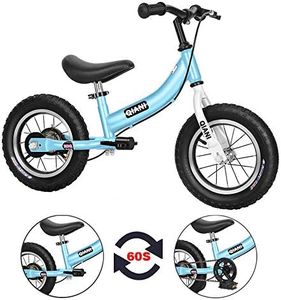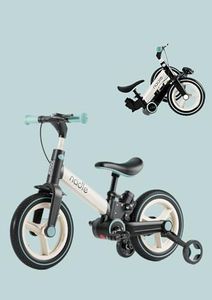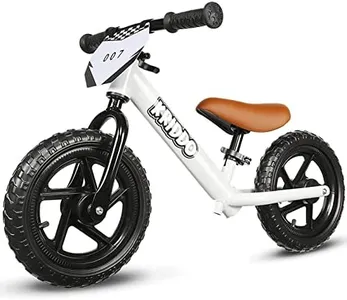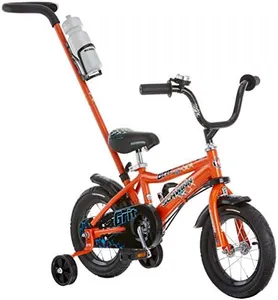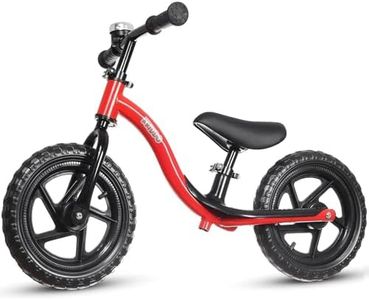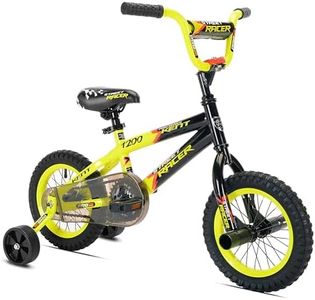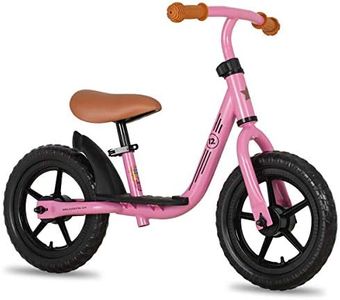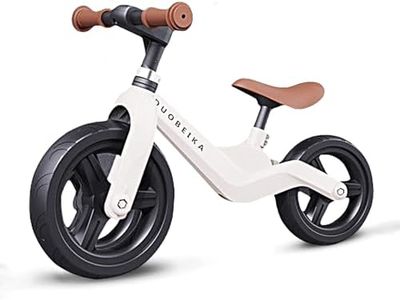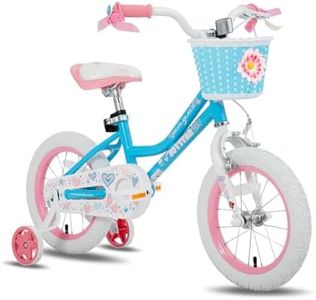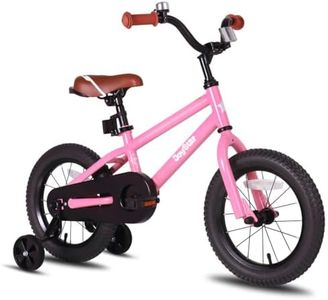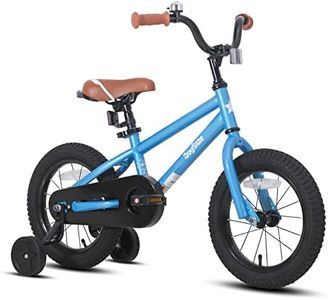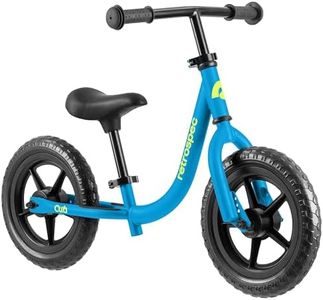We Use CookiesWe use cookies to enhance the security, performance,
functionality and for analytical and promotional activities. By continuing to browse this site you
are agreeing to our privacy policy
10 Best 12 Inch Bike
From leading brands and best sellers available on the web.Buying Guide for the Best 12 Inch Bike
Choosing a 12-inch bike is an exciting step, often being a child's very first experience with a pedal bike. These bikes are generally designed for young children, typically between the ages of 2 to 4 years old, who are learning the basics of balance and coordination. When picking the right 12-inch bike, it's important to focus on comfort, safety, and encouraging your child’s confidence. Think about your child's size and skill level rather than just age, and remember that the right fit will make learning to ride enjoyable and safe.Frame MaterialThe frame material refers to what the main body of the bike is made from, with common materials being steel or aluminum. This matters because the material affects the bike’s weight, strength, and how easy it is for a young child to handle. Steel frames are typically sturdy and durable but heavier, while aluminum frames are lighter and easier to lift and control. For most young children, a lighter frame is preferable, especially if they are just starting out or will need to pick up the bike themselves.
WeightWeight is how heavy the bike is, and it plays a big role in how easily your child can pick up, push, and ride their bike. Lighter bikes are generally easier for small children to maneuver and less intimidating if they fall. When comparing bikes, look for one that your child can lift without straining. For a 12-inch bike, try to find a model where the bike’s weight is about half your child’s body weight or less. This will help them feel more in control while learning.
BrakesBrakes are the mechanisms that stop the bike and usually come in two main types for 12-inch bikes: coaster brakes (pedal backwards to stop) and hand brakes (squeeze levers). Coaster brakes are very common and simple to use for young kids who may not yet have the hand strength for a lever. Hand brakes can be helpful to get children used to the way larger bikes work in the future. Choose based on your child's comfort—coaster brakes are often best for the youngest children, while combo bikes with both types can be good for those ready to learn more.
Seat Height and AdjustabilitySeat height describes how high the saddle sits off the ground. It’s important because it affects whether your child can place their feet flat on the ground while sitting, which helps with starting, stopping, and feeling secure. Look for bikes with easily adjustable seat heights, so you can raise the seat as your child grows and gets more confident. The right height is one where your child can sit and touch the ground with both feet comfortably.
Training Wheels and Balance OptionsMany 12-inch bikes come with training wheels, which help keep the bike upright while your child is learning. Some models also offer options to remove them, or even start as a balance bike (no pedals) and later convert to a pedal bike. Training wheels are useful for children still learning basic balance, while balance bikes can teach coordination before moving to pedals. Choose a setup based on your child’s current skill—if they have not yet learned to balance, starting with training wheels or a balance bike function is ideal.
Tire TypeThe type of tire can affect how the bike rides. Most 12-inch bikes use air-filled (pneumatic) tires, which give a smoother ride and good traction. Some have foam or solid tires that can’t go flat but may be less comfortable over bumps. For most children riding on sidewalks or paved paths, air-filled tires are preferable. If you want less maintenance and your child will ride mostly indoors or on very smooth surfaces, solid tires may be enough.
Geometry and Standover HeightGeometry refers to the overall shape and design of the bike, especially how easy it is to get on and off. Standover height is the distance from the ground to the top tube of the frame. A lower standover height means your child can easily step over the bike, making it safer and less intimidating. Look for a bike with a low, approachable frame so your child feels confident and in control from the very start.
